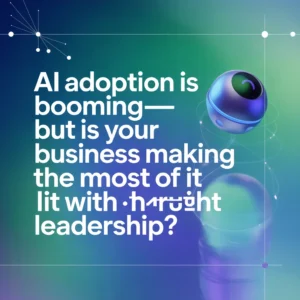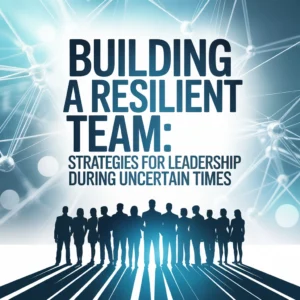Business as usual is fast disappearing for Britain’s small and medium-sized enterprises. The pace of technological change, especially with artificial intelligence, unrelenting market uncertainty, and mounting pressure to act at speed, isn’t just rewriting the rulebook; it’s demanding an entirely new play. In this era, the rise of the fractional executive model is one of the smartest moves ambitious SMEs can make.
How AI Is Reshaping the SME Landscape
Not long ago, talk of AI in the SME space might have prompted eye rolls or blank stares. Fast-forward to today, and things have changed dramatically. Nearly one in five SMEs have integrated generative AI tools into their operations in less than a year since these technologies were made widely available. That’s an adoption rate that would make any CTO do a double-take.
Why this surge? Quite simply, SMEs recognise that AI isn’t just “shiny tech”—it’s a lever for growth, innovation, and competitive edge. Whether it’s automating low-value tasks, generating smarter customer insights, or streamlining supply chains, SMEs are already reaping the benefits. 
Yet, there’s a catch: integrating AI into an SME isn’t a simple plug-and-play exercise. AI presents its own set of strategic, technical, and cultural challenges. Most SMEs don’t have the luxury (or budget) for an in-house AI team or a Chief Data Officer on a six-figure salary.
The Uncertainty Factor: Navigating a Storm
It’s fair to say the only certainty in the modern SME environment is uncertainty. Customer expectations shift almost overnight. Supply chain hiccups can flare up from nowhere. Today’s strategic plan can look completely out-of-date by next quarter.
Traditional, full-time executive hiring doesn’t always fit this reality. It’s slow. It’s costly. And it’s predicated on a world where long-term, unchanging leadership makes sense. For SMEs, whose priorities can shift literally week to week, the need for agility trumps tradition every time.
Markets are unforgiving: hesitate too long and you risk irrelevance. Move reactively without solid strategic oversight, and you court disaster.
Why Speed Has Become Non-Negotiable
In the current landscape, speed isn’t a nice-to-have; it’s mission-critical. SMEs must pivot quickly, make robust decisions on the fly, and deliver results with fewer resources. The days of ponderous strategy retreats and 12-month onboarding plans are fading fast.
From deploying AI-powered automation to launching new digital products, executional speed can be the difference between leading the pack or playing catch-up. Lengthy c-suite recruitment cycles or inflexible leadership contracts simply don’t suit an era where tomorrow’s challenge may be unlike today’s.
The Rise of the Fractional Executive: A New Era for SME Leadership
Enter the fractional executive—seasoned, hands-on leaders available on a part-time or project basis, ready to deliver strategic impact from day one. It’s a model that’s seen a huge uptick across forward-thinking companies already, with proven benefits for both bottom line and business agility.
What Is a Fractional Executive?
Put simply, a fractional executive is a board-level leader who works with your business on demand, think of it as leadership “on tap”. Whether you need a part-time Sales Director, a fractional CMO, or an interim Chief Technology Officer, you get instant access to top-tier expertise precisely when it matters, without the cost or commitment of a full-time hire.
At Leadership Services, we’ve seen SMEs in manufacturing, tech, services, and beyond increasingly lean on fractional talent, particularly when tackling critical programmes like digital transformation or AI adoption. (Learn more about our fractional services.)
Benefits of Fractional Leadership for SMEs
1. Immediate, High-Impact Expertise
Fractional leaders are typically veterans who’ve delivered for dozens (sometimes hundreds) of organisations. They can hit the ground running with no need for elaborate onboarding or slow ramp-up periods. Your business can get strategic input on AI implementation, for example, in weeks, not months.
2. Cost-Effective Access to the Best
Budgets matter, especially right now. The cost of hiring a full-time C-suite executive can be prohibitive for many SMEs. With a fractional appointment, you pay for what you need, when you need it, without the overhead of a full-time salary, pension, and perks. That means money saved for other strategic projects or capacity building.
3. Greater Flexibility and Scalability
Need deep expertise during a critical AI transformation or to steer the business through a choppy market? Want to scale back to “advisory only” during quieter months? This model lets you dial executive involvement up or down as business conditions change, preserving both flexibility and focus.

4. Strategic Focus, Not Operational Distraction
One overlooked superpower of fractional executives? They are laser-focused on the brief at hand, typically transformation, improvement, or growth. They’re not there for office politics or day-to-day management, freeing them (and you) to focus on moving the business needle.
5. Diverse Experience, Fresh Perspective
Fractional execs bring a wide-ranging view honed across multiple sectors and businesses. This cross-pollination of insights is especially valuable for SMEs embarking on AI journeys, as they may spot pitfalls or shortcuts you’d never identify with an “inside only” team.
Fractional Executives & AI Adoption: Closing the Capability Gap
SMEs eager to tap AI’s promise may lack in-house expertise or simply don’t know where to begin. Fractional executives bridge that gap, bringing best-in-class strategy, hands-on leadership, and deep experience in digital transformation.
Some key ways a fractional director can supercharge your AI journey:
- Creating a clear, right-sized AI roadmap grounded in business goals
- Managing the tech selection and implementation process
- Fostering cross-team buy-in for digital change (no small feat!)
- Embedding best practices in risk management and data governance
- Ensuring new AI efforts deliver genuine, measurable ROI
For more in-depth guidance, check out our AI-powered business automation insights.

Where Fractional Leadership Makes the Greatest Impact
- When agility is essential: Entering a new market, adopting AI, pivoting products, or responding to a crisis.
- When stakes are high but headcount is tight: Critical board-level expertise without breaking the bank.
- When it’s time to transform, but clarity is needed: Digital transformation, restructuring, or major process overhauls.
Fractional leaders don’t just smooth the bumps on the journey—they accelerate progress. That’s why this model is already well-established among ambitious, growth-minded SMEs, and why its time has well and truly come.
Looking Forward: Fit for the Future
As AI continues its relentless march and volatility becomes business-as-usual, SME leaders face a clear choice: do they try to muddle through with the old, rigid executive model, or do they embrace flexibility, strategic expertise, and speed?
Fractional leadership isn’t about “making do” or settling for less. It’s about having the right skills at the critical moment, staying sharp, responsive, and prepared for whatever change is around the corner.
Ready to see what transformative leadership could look like for your business? Find out more about hiring a director on demand at Leadership Services, or follow our Insights hub for more on how modern SMEs are winning with flexible executive talent.
Act fast, act smart—give your business the leadership edge it deserves.


